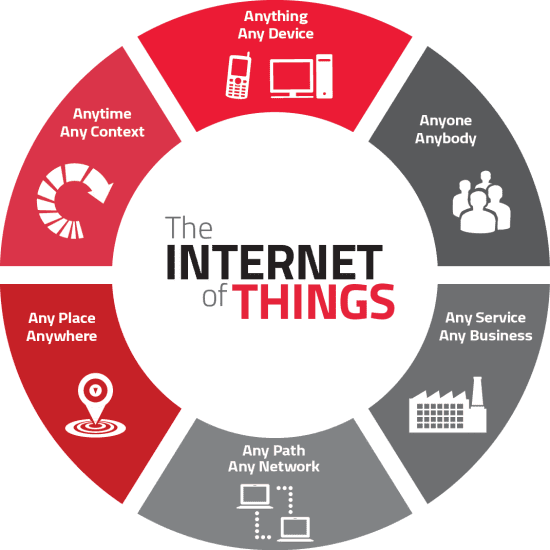IoT is having a profound effect on business. 57 per cent of all global businesses have adopted IoT practices and 72 per cent of those believe their company is more profitable since embracing IoT. With this large scalability, however, comes the potential for catastrophe. More connected devices bring new business challenges around scale, interoperability, security and the management of devices and endpoints. Businesses need to think strategically about IoT adoption and not become caught up in the next wave of innovation. Any size organisation can benefit by connecting IoT to business processes – but, if a strategy is not in place, companies will find themselves throwing endless resources into connecting everything to the internet, rather than just those devices that are critical to their business. As a result, businesses may find themselves tangled in the web of connected devices and lost in the IoT explosion.
To avoid the flying shrapnel, Jordan O’Connor, Technical Team Lead EMEA at SOTI, has five golden rules to follow to ensure businesses reap all the benefits of IoT; without becoming misplaced. The rules follow a ripple effect; that if followed chronologically, will ensure a solid foundation for the IoT estate that companies will be able to gradually develop their IoT structure towards. This will ensure IoT is working solely to improve the business rather than overloading departments with large amounts of useless data, wasting valuable time and resources.
- Perfect the business vision
Businesses need to ensure they have an end goal and there is a clear vision for what needs to be achieved through IoT. This vision needs to be looked at on a larger scale, not just as creating ‘smart’ devices, but enlightening the business by providing customer behaviour intelligence and company activity for the purpose of improving business productivity and cutting costs. There is always room to go beyond the initial end goal as well, by speaking to partners about the future of IoT and the wider impact for industries and businesses.
- Create a clear strategy
Having established a vision, businesses must have a clear strategy for implementing the IoT estate. It is tempting to think everything that has the ability to connect should be connected, but it is essential companies decipher which devices need to be connected from a business sense, rather than connecting every device as soon as possible.
Within this strategy, businesses need to ensure there are key tools in place to troubleshoot and diagnose IoT problems, and have an experienced IT team to support the IoT infrastructure. A comprehensive strategy will empower workers and allow the company to transform the business, unleashing endless possibilities as a result and help to reach critical growth for their business.
- Start with what you know
After establishing a clear IoT strategy, a good starting point for introducing IoT is to analyse the data the business obtains in order to make strategic decisions. Rather than rushing and connecting all of the devices, start with devices that are familiar to the business amongst employees using the technology they actively work with day to day, and then expand from there.
The first natural step is to analyse mobile devices. Most employees have the ability to access company data from wherever they are, therefore a robust mobile strategy can vastly improve customer service delivery, business productivity, but most importantly, secure mobile devices for the increasing mobile workforce.
- ‘Dumb terminals’ and stationary objects
Once there is an established mobile strategy, you can look to the ‘dumb’ terminals within the company. These are the devices, such as routers or printers, that are consistent and do not move. A smart printer can collect data which can be analysed to alert employees to various issues, if the device is running low on supplies or if it needs servicing for example. This data will result in improved productivity and efficient cost savings within the office environment.
Companies can also look at connecting other stationary objects within their office space such as fridges, which can digitally track expiry dates as well as reorder food that is running low, resulting in less waste and thus promote efficient cost savings.
- What about the future?
Having established an IoT business critical vision for simple devices, companies can progress to looking at their workforce infrastructure as a whole. Devices that move frequently, for example office doors, all have the potential to become connected. Sensors connected to doors can feedback information on who is entering certain rooms and at what times. As well as this, some connected entrances have the ability to unlock with just a voice command.
With that said, businesses need to ensure that they are not connecting objects for the sake of it. For example, a simple chair does not need to be connected, just so it can feedback on when it has been pushed into a table. There needs to be a business critical focus in deciphering which devices become connected, and which need to be left alone.
Internet of ‘some’ things
By following these five golden rules, companies can adopt a strategic approach to IoT, by connecting some things rather than the internet of ‘every’ thing. Only devices that are critical to the business need to be connected. Unnecessary IoT adoption will result in time and resources being wasted and won’t provide any asset to the business. The possibilities for IoT are endless, but companies need to follow the structure of these golden rules to avoid becoming lost in the ever-growing IoT explosion.
The opinions expressed in this post belongs to the individual contributors and do not necessarily reflect the views of Information Security Buzz.



